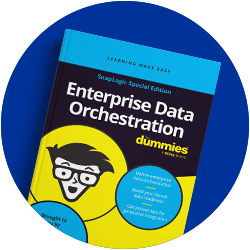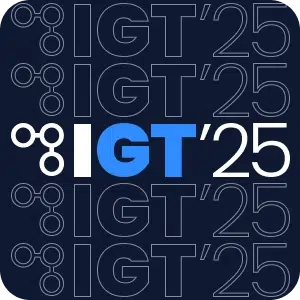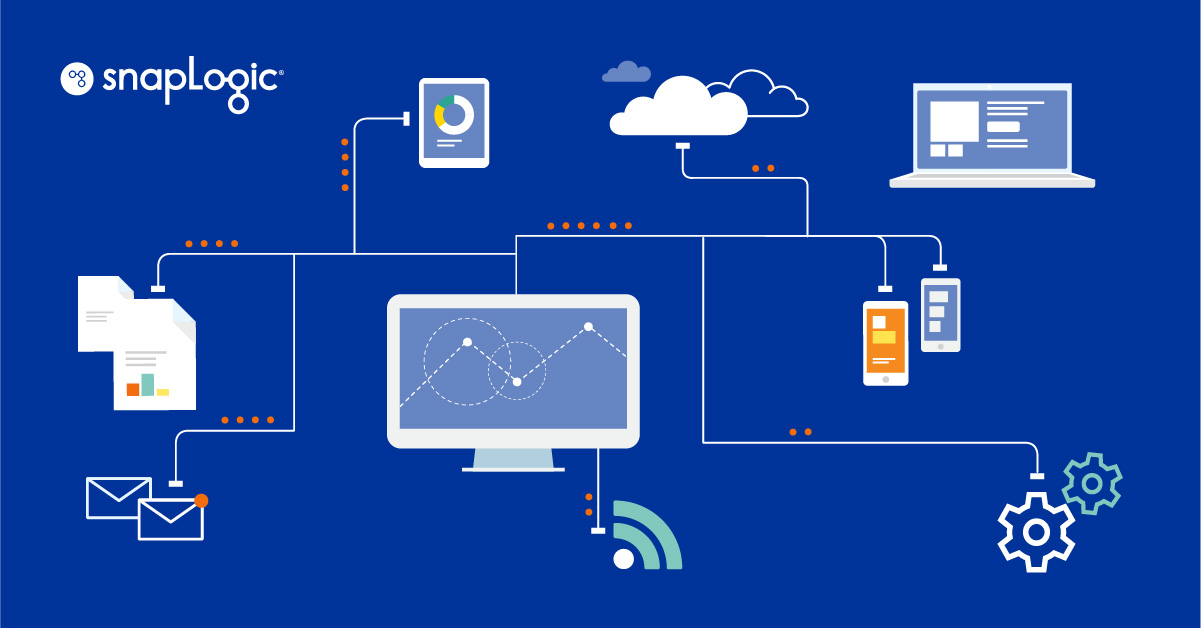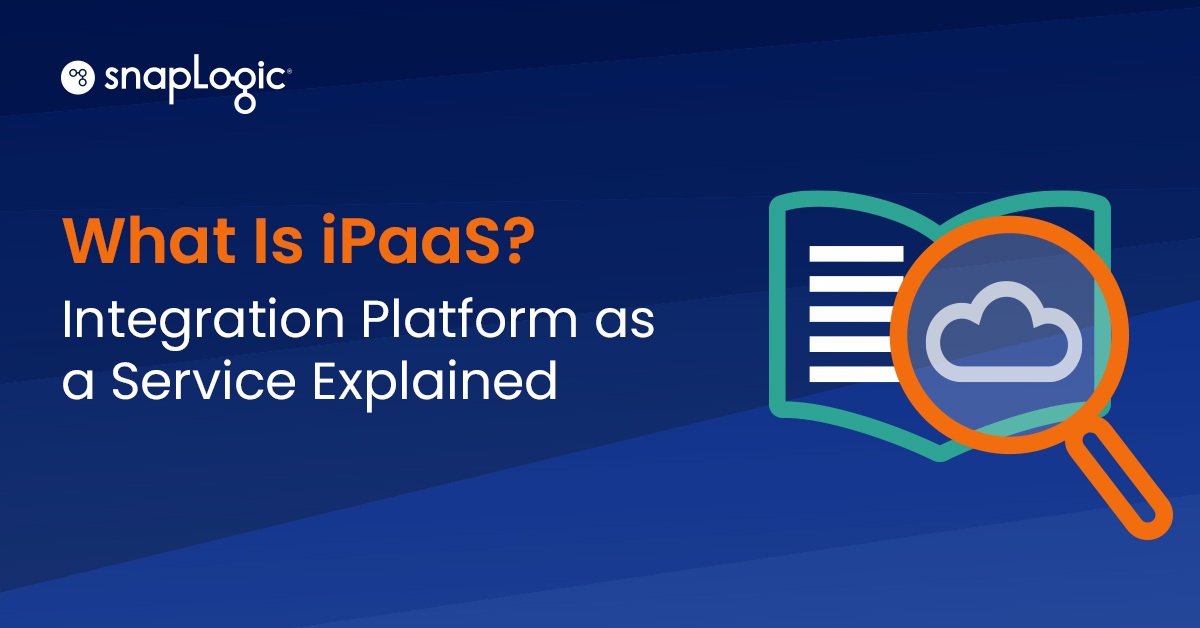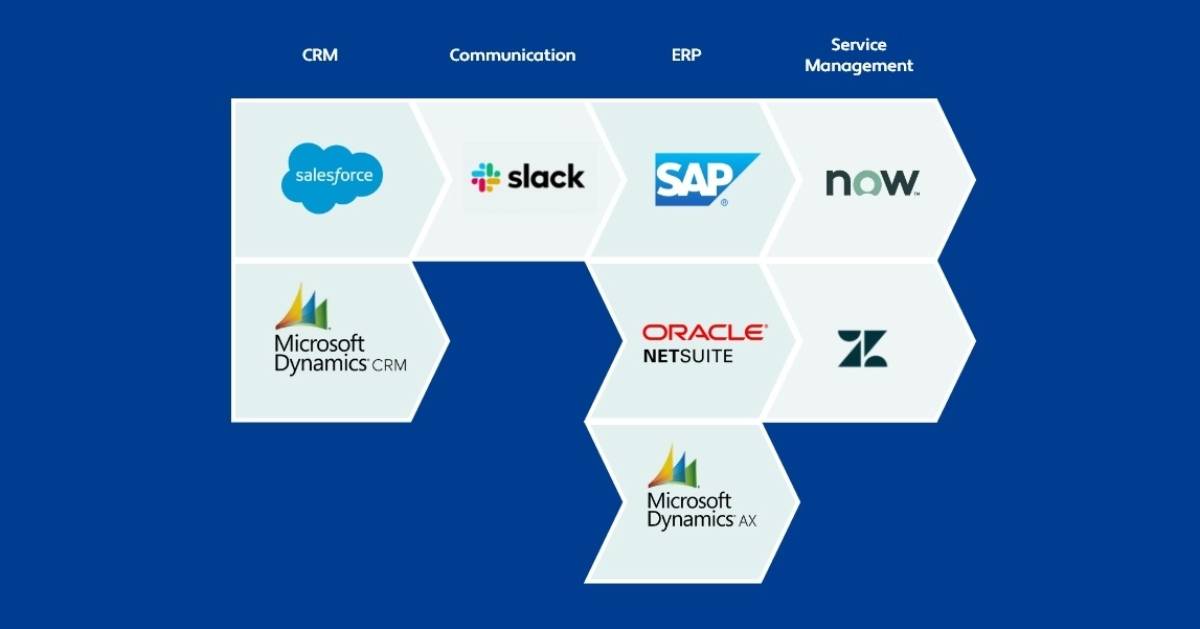Die Nachfrage nach nahtloser, skalierbarer Integration war noch nie so hoch wie heute. Da Unternehmen immer mehr Cloud-Anwendungen einführen, KI-gestützte Workflows entwickeln und zusammensetzbare Architekturen einsetzen, wird die Integration zum Rückgrat der geschäftlichen Agilität. Hier kommt iPaaS (Integration Platform as a Service) ins Spiel: ein moderner Ansatz für die Verbindung von Anwendungen, die Automatisierung von Prozessen und die Orchestrierung von Datenflüssen in hybriden und Multi-Cloud-Umgebungen.
In diesem Blog stellen wir die wichtigsten iPaaS-Anbieter vor, die heute die Integrationslandschaft prägen. Von innovativen Cloud-Anbietern bis hin zu etablierten Unternehmen - jede Plattform hat ihre eigenen Stärken in Bezug auf Architektur, Benutzerfreundlichkeit und KI-gesteuerte Automatisierung.
Unabhängig davon, ob Sie Altsysteme modernisieren, Echtzeit-Datenpipelines aufbauen oder neue digitale Erlebnisse ermöglichen möchten, hilft Ihnen das Verständnis der Unterschiede zwischen diesen Plattformen bei der Auswahl der richtigen Grundlage für Ihr zukunftsfähiges Unternehmen.
Was ist iPaas?
Das Wichtigste zuerst: Was ist iPaaS? Eine Integrationsplattform als Service (iPaaS) ist eine Suite von Cloud-Diensten, die die Entwicklung, Ausführung und Verwaltung von Anwendungsintegration, API-Verwaltung und Datenintegration ermöglicht, um sowohl lokale als auch Cloud-basierte Systeme, Dienste, Cloud-Anwendungen, lokale Anwendungen und andere Datenquellen zu verbinden.
Diese Dienste werden in der Regel mit visuellen Low-Code-Schnittstellen und Vorlagen entwickelt. Im Gegensatz zum Enterprise Service Bus (ESB) der Vergangenheit werden sie auf einer Cloud-basierten Infrastruktur wie AWS, Azure und Google Cloud aufgebaut, um als Plattform für die Automatisierung von Arbeitsabläufen und die gemeinsame Nutzung von Daten zwischen allen Anwendungen und Datenquellen sowohl innerhalb als auch außerhalb eines Unternehmens zu dienen.
Unternehmen können iPaaS nutzen, um Technologien in ihr gesamtes Software-Ökosystem zu integrieren.
Top 13 iPaaS-Anbieter
SnapLogic

SnapLogic ist eine moderne, Cloud-native Plattform, die sich auf ereignisgesteuerte, Daten-, Anwendungs- und API-Integrationen konzentriert. Die intuitive Low-Code/No-Code-Benutzeroberfläche ist sowohl für IT- als auch für Geschäftsanwender einfach zu bedienen und wird durch starke KI-Funktionen (SnapGPT, AgentCreator, Selbstheilung, prädiktive Pipelines) ergänzt. Sie ist für eine schnelle Skalierung und den Aufbau intelligenter, kompatibler Architekturen konzipiert.
- Bereitstellungsstil: Cloud-nativ
- Art der Integration: Ereignisgesteuerte, Daten-, Anwendungs- und API-Integrationen
- Benutzerfreundlichkeit: Starker Low-Code/No-Code, mehr als 1000 vordefinierte Verbindungen
- Schwerpunkt KI/Automatisierung: Starke KI (SnapGPT, ML-Pipelines, selbstheilende Arbeitsabläufe)
IBM

IBMs Cloud Pak for Integration unterstützt hybride und Multi-Cloud-Integration und bietet Anwendungs-, Daten- und API-Konnektivität. Es lässt sich mit Watson AI integrieren, um Integrationsworkflows zu automatisieren, Einblicke zu gewinnen und prädiktive Analysen durchzuführen.
- Bereitstellungsart: Hybrid
- Art der Integration: Integration von Anwendungen und Daten, API-Verwaltung
- Benutzerfreundlichkeit: Mittel bis komplex
- Schwerpunkt KI/Automatisierung: Wachsender KI-Schwerpunkt (Watson-Integration)
Mulesoft (Salesforce)

Die Anypoint-Plattform von MuleSoft konzentriert sich auf API-gestützte Konnektivität und hybride Integration. Sie zeichnet sich durch die Entwicklung, Verwaltung und Sicherung von APIs aus und ermöglicht modulare, wiederverwendbare Architekturen. Obwohl sie nicht stark KI-gesteuert ist, wird sie für groß angelegte API-Ökosysteme und komponierbare Strategien bevorzugt.
- Bereitstellungsart: Cloud, Hybrid, Vor-Ort
- Stil der Integration: API-geführte Architektur (API-first Design)
- Einfacher Gebrauch: Mittel (erfordert etwas Entwicklungsarbeit)
- Schwerpunkt KI/Automatisierung: Begrenzte direkte KI, Fokus auf API-Lebenszyklus
Informatica (Salesforce)

iPaaS von Informatica baut auf der starken ETL-Tradition auf und unterstützt hybride und On-Premise-Bereitstellungen. Es ist datenzentriert und bietet umfangreiche Funktionen für Datenmanagement, -qualität und -steuerung. Die CLAIRE AI-Engine von Informatica verbessert die Automatisierung bei der Datenintegration, -umwandlung und -katalogisierung und macht sie robust für komplexe Unternehmensanforderungen.
- Bereitstellungsart: Cloud, Hybrid, Vor-Ort
- Art der Integration: Datenzentriert (ETL-Erbe), APIs
- Benutzerfreundlichkeit: Mäßig (eher technisch)
- Schwerpunkt KI/Automatisierung: Starke KI (CLAIRE-Engine für Automatisierung)
Microsoft Azure iPaaS

Microsoft Azure iPaaS ist eine Cloud-native Integrationsplattform, die eng in das Azure-Ökosystem integriert ist. Sie bietet Tools wie Logic Apps und API Management, um Anwendungen zu verbinden, Workflows zu automatisieren und Datenintegrationen über Cloud- und lokale Umgebungen hinweg zu verwalten.
- Bereitstellungsstil: Cloud-nativ
- Art der Integration: API-basiert, starker Fokus auf Daten und Anwendungen
- Benutzerfreundlichkeit: Mittel (erfordert Azure-Kenntnisse)
- Schwerpunkt KI/Automatisierung: Moderative KI (Logik-Apps, KI-Builder-Integrationen)
Workato

Workato ist eine cloud-native, no-code Plattform, die für die Zusammenarbeit von Unternehmen und IT optimiert ist. Sie kombiniert ereignisgesteuerte Automatisierung mit starker KI-Unterstützung (KI-Bots und Empfehlungen) und ermöglicht es Benutzern, anspruchsvolle Workflows ohne technische Komplexität zu erstellen
- Bereitstellungsstil: Cloud-nativ
- Art der Integration: Ereignisgesteuerte, App-Integrationen
- Benutzerfreundlichkeit: Starker No-Code
- Schwerpunkt KI/Automatisierung: Starke KI (KI-gestützte Bot-Erstellung)
Boomi

Boomi bietet eine vollständig Cloud-native, Low-Code-Integrationsplattform, die auf Geschwindigkeit und Benutzerfreundlichkeit ausgelegt ist. Boomi ist für seine intuitive Benutzeroberfläche und vorgefertigten Konnektoren bekannt und hilft Unternehmen, Anwendungen und Daten schnell zu verbinden. Der Schwerpunkt liegt auf Einfachheit und Agilität, mit moderaten KI-Funktionen für Mapping und Fehlerbehandlung.
- Bereitstellungsstil: Cloud-nativ + hybrid
- Art der Integration: API-basierte, vorgefertigte Konnektoren
- Benutzerfreundlichkeit: Starke low-code UI
- Schwerpunkt KI/Automatisierung: Mäßige KI (einige intelligente Zuordnungen, Fehlererkennung)
Jitterbit

Jitterbit bietet eine flexible Low-Code-Plattform, die sich auf schnelle API-basierte Integrationen und vorgefertigte Vorlagen konzentriert. Sie ermöglicht eine schnelle Bereitstellung und ist auch für Nicht-Entwickler leicht zu bedienen. Die KI-Funktionen nehmen zu, vor allem bei der intelligenten Automatisierung und Fehlerbehandlung.
- Bereitstellungsart: Cloud, Hybrid
- Art der Integration: API-first, vorgefertigte Konnektoren
- Benutzerfreundlichkeit: Starker Low-Code/No-Code
- Schwerpunkt KI/Automatisierung: Einige intelligente Automatisierungsfunktionen
Tablett.ai

Tray.ai ist eine Cloud-native, API-basierte Integrations- und Automatisierungsplattform, die sich auf die Erstellung von No-Code-Workflows konzentriert und es Benutzern ermöglicht, SaaS-Anwendungen zu verbinden und Geschäftsprozesse ohne aufwändige Entwicklung zu automatisieren.
- Bereitstellungsstil: Cloud-nativ
- Art der Integration: API-First, App-Integrationen
- Benutzerfreundlichkeit: Sehr starker No-Code
- Schwerpunkt KI/Automatisierung: Mäßige KI (Automatisierungsfunktionen, einige ML-Funktionen)
TIBCO

Die Integrationsplattform von TIBCO unterstützt ereignisgesteuerte, hybride und ortsgebundene Implementierungen. Sie wurde entwickelt, um Anwendungen und Datenquellen auf Unternehmensebene zu verbinden, mit Unterstützung für Datenintegration und -analyse.
- Bereitstellungsart: Hybrid, vor Ort, in der Cloud
- Art der Integration: Ereignisgesteuerte, starke Datenintegration
- Benutzerfreundlichkeit: Mittel bis komplex
- Schwerpunkt KI/Automatisierung: KI (TIBCO Data Science, Streaming-Analysen)
SAP

SAP Integration Suite verbindet SAP- und Nicht-SAP-Systeme in hybriden und Multi-Cloud-Umgebungen. Sie legt den Schwerpunkt auf vorgefertigte Inhalte und eine tiefgreifende Geschäftsprozessintegration, insbesondere für Unternehmen, die SAP-Anwendungen standardisieren. KI ist auf dem Vormarsch, gehört aber heute noch nicht zum Kern der Integrationsschicht.
- Bereitstellungsart: Hybrid
- Art der Integration: Integrationen von Unternehmensanwendungen, Fokus auf Daten
- Benutzerfreundlichkeit: Mäßig (einige Vorkonfigurationen)
- Schwerpunkt KI/Automatisierung: Geringe/begrenzte KI, die in die Integrationsschicht integriert ist
Oracle

Oracle Integration Cloud verbindet Oracle-Anwendungen und externe Systeme mit vorgefertigten Adaptern und einem leistungsfähigen API-Management. Sie wurde für hybride und unternehmensweite Szenarien entwickelt und unterstützt robuste Governance und Compliance. KI und Automatisierung verbessern die Prozessabläufe, sind aber eher inkrementell als transformativ.
- Bereitstellungsart: Cloud, Hybrid, Vor-Ort
- Art der Integration: Integration von Anwendungen und Daten, starke APIs
- Einfacher Gebrauch: Mittel
- Schwerpunkt KI/Automatisierung: Teilweise Automatisierung, starke Governance
Software AG

Die webMethods-Plattform der Software AG bietet hybride Integration mit starker API- und B2B-Konnektivität. Sie unterstützt geschäftskritische, groß angelegte Unternehmensumgebungen und zeichnet sich durch Governance und Zuverlässigkeit aus. KI-Funktionen sind vorhanden, stehen aber nicht im Vordergrund, sondern eher die Stabilität.
- Bereitstellungsart: Hybrid
- Art der Integration: API- und B2B-Integrationen
- Einfacher Gebrauch: Mittel
- Schwerpunkt KI/Automatisierung: Begrenzte direkte KI
Sehen Sie auf einer interaktiven Tour, wie SnapLogic iPaaS die Datenintegration ermöglicht.
Lobende Erwähnung: angrenzende Tools für die Integration
Während sich iPaaS-Plattformen auf die Vereinheitlichung von Anwendungs-, Daten- und API-Integrationen durch Low-Code-Automatisierung konzentrieren, gibt es eine wachsende Anzahl von angrenzenden Tools, die bei der Lösung spezieller Integrationsprobleme helfen. Dazu gehören Plattformen für Datenbewegung und -umwandlung (ELT/ETL), Datenqualität und API-Verwaltung.
Obwohl sie nicht die gleiche umfassende Prozess- und Anwendungsintegration bieten wie iPaaS, spielen sie eine entscheidende Rolle in modernen Datenarchitekturen und Cloud-Ökosystemen. Hier ein kurzer Blick auf einige der am häufigsten verwendeten Tools in diesen angrenzenden Kategorien und warum sie oft neben oder in Kombination mit iPaaS-Lösungen in Betracht gezogen werden.
Fivetran
Fivetran ist eine automatisierte ELT-Plattform, die für die wartungsfreie Übertragung von Daten aus SaaS-Anwendungen und Datenbanken in moderne Data Warehouses entwickelt wurde und schnelle, zuverlässige Analysepipelines ermöglicht.
- Schwerpunkt: Automatisierte Erstellung von Datenpipelines von SaaS und Datenbanken in Data Warehouses (z. B. Snowflake, BigQuery).
- Stärke: Wartungsfreie Konnektoren und vollständig verwaltete Datenreplikation.
- Warum nicht streng iPaaS: Der Schwerpunkt liegt nicht auf der vollständigen Anwendungsintegration, der API-Verwaltung oder der ereignisgesteuerten Orchestrierung in Echtzeit, die die Kennzeichen eines iPaaS sind.
Talend
Talend ist eine Datenintegrations- und Governance-Lösung, die sich auf saubere, vertrauenswürdige Datenpipelines konzentriert und robuste Datenqualitäts- und Aufbereitungsfunktionen für Unternehmensanalysen bietet.
- Schwerpunkt: Datenpipelines, Datenbereinigung und Datenaufbereitung.
- Stärken: Starke Datenqualitäts-Tools und Governance-Funktionen, seit kurzem unter dem neuen Namen Qlik.
- Warum nicht ausschließlich iPaaS: Bietet Cloud-Integration, ist aber traditionell eher auf Batch-Datenintegration als auf App-to-App-Prozessautomatisierung oder API-Integrationen ausgerichtet.
Matillion
Matillion ist ein Cloud-natives ETL/ELT-Tool, das für die Transformation und Orchestrierung von Daten in Cloud-Data-Warehouses entwickelt wurde und moderne Analyseteams mit einer benutzerfreundlichen Oberfläche ausstattet.
- Schwerpunkt: Umwandlung von Daten in modernen Cloud-Datenplattformen (Snowflake, Redshift, BigQuery).
- Stärken: Einfache Schnittstelle für Analytics-Engineering und starke Unterstützung für moderne Daten-Stacks.
- Warum nicht iPaaS: Bietet keine App-to-App-Integrationen oder umfassende Prozessautomatisierung; der Schwerpunkt liegt auf Analyse-Pipelines und nicht auf der Integration von Betriebssystemen.
Kong
Kong ist eine leistungsstarke API-Verwaltungsplattform, die Microservices und APIs sichert, verwaltet und skaliert und für moderne, Cloud-native Konnektivität und Service-Mesh-Anwendungsfälle entwickelt wurde.
- Schwerpunkt: API-Gateway, Dienstnetz, Konnektivität von Microservices.
- Stärke: Leistungsstarke, Cloud-native API-Verwaltung und Verkehrssteuerung.
- Warum nicht iPaaS: Verwaltet und sichert APIs, anstatt Drag-and-Drop-Workflows für die Daten- und Anwendungsintegration anzubieten.
Wie man die richtige Integrationsplattform auswählt
Bei der Integration geht es nicht nur um die Übertragung von Daten. Es geht darum, eine einheitliche, intelligente Grundlage zu schaffen, die schnelle Innovation und betriebliche Stabilität unterstützt. Die führenden iPaaS-Anbieter im Jahr 2025 bieten ein breites Spektrum an Funktionen, von der Einfachheit von Low-Code und API-first-Designs bis hin zu fortschrittlicher KI-gesteuerter Automatisierung.
Die Wahl der richtigen iPaaS hängt von den Zielen Ihres Unternehmens ab: ob es darum geht, die Konnektivität von Anwendungen zu beschleunigen, Geschäftsanwender zu unterstützen, zusammensetzbare Architekturen zu skalieren oder KI-gestützte Entscheidungsfindung zu ermöglichen. Wenn Sie Ihre Integrationsstrategie auf die Stärken dieser Plattformen abstimmen, können Sie schnellere Innovationen, bessere Dateneinblicke und ein anpassungsfähigeres digitales Unternehmen schaffen.
Sehen Sie auf einer interaktiven Tour, wie SnapLogic iPaaS die Integration von Anwendungen ermöglicht.

